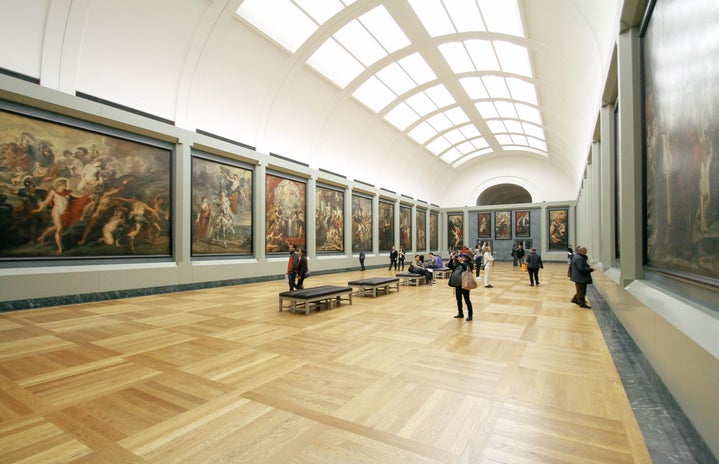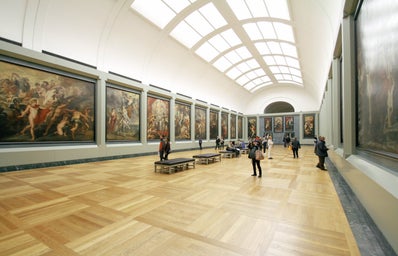When I think of sustainability I’ve always focused on reducing plastic cups, sustainable fashion, reducing electricity use— things I think about every day consciously because it varies. It never occurred to me to think beyond that, such as the things we are surrounded by, everyday—furniture! As a New School student, it never dawned on me to think about how the furniture that makes up my dorm room, is shared furniture, used from one year to the next, from one student to the next. This furniture was there before I even thought of applying to The New School! And yet, in some way, these practices are comfortable, accommodating and sustainable.
I recently visited Mebl, a company where recycling found materials creates one of a kind, artistic furniture. I got a chance to interview the founder and owner, Michael Hirschhorn, to learn about the story behind the company and their mission with sustainability in Mebl’s very own showroom surrounded by all the extraordinary collection of furniture. As you may have seen on your walk to school, their pop-up shop is located on 14th street and 5th avenue, where their window pieces are real head-turners.
Her Campus: So tell me how Mebl started?
Michael Hirschhorn: I started developing the idea for Mebl; Transforming Furniture about four years ago, but we’ve only been open for 6 months here, and the inspiration was the combination of beautiful, handmade furniture and saving the world through sustainability. It’s not my background— It’s completely different. My background was an executive director for a non-profit education and human rights organization.
HC: How did you start the whole idea of creating new furniture out of recycled materials for Mebl?
MH: So the core Idea is our slogan: beautiful furniture, reimagined from old wood and metal. The word “reimagined” is important because we’re putting a big emphasis on imagination. So while everyone is seeing a pile of old floorboards or broken down boats; the designers and artists imagine that as a beautiful cabinet or table. We’re focusing on the human capacity of imagination. What we’re trying to do is move the whole marketplace so that the customers’ conceptions of reclaimed furniture moves away from just “hip” coffee shops to much more elegant, mainstream furniture in the hopes that over time, more and more furniture will made out of reused material than new materials.
HC: I see each furniture is labeled from both where they are from and the artist/furniture maker who created it. Tell me the process of collecting these pieces of furniture from places around the world.
MH: The collection are from 100 furniture makers and artists all around the world. 50% are from the United States— various states, 25% are international furniture makers from many parts of the world and the last 25% are from here, locally in New York— dominantly Brooklyn.
HC: How did you find these artists?
MH: 90% from the internet. This was when I started getting bored of my previous job— picture me 1AM on my computer browsing. Essentially, we are trying to showcase things that are hard to find, so it’s difficult on my part too. Going seven layers down the internet to find these people and with Mebl we lift them up. Some are also by mouth, by connecting with people. I’ve also found furniture makers from traveling. One time I found a furniture maker that makes furniture out of scraps and another furniture maker who makes out of new material. The second one said that he didn’t know where to source scrap materials. I connected them both together and they collaborated and helped each other in their making processes. An old man came into this store one day and told us about how he felt that our place was a “calling” for him. He had been making beautiful tables— a big passion in his life but never had the chance to show it to anyone. We saw his work and we were in awe. It’s now here in our store.
HC: It’s great how you’re also trying to elevate the visibility of these furniture makers and artists. As the owner of Mebl, what’s your goal for these artists and the company itself? How do you plan to see the furniture industry in the future?
MH: We’re “championing” sustainable and reclaimed furniture to the next generation. Your values, your home. We try to appeal to people who want their home and spaces reflect their own value system; not only beautiful but sustainable.
HC: These pieces are all one of a kind, unique and very artistic. Because they are also considered somehow like fine art, their prices are very high as well. How do you appeal to the younger generation— like us college students or recent grads, to start using sustainable furniture rather than IKEA, let’s say, who are definitely more budget friendly? Are there alternatives to those who can’t afford them yet?
MH: We try to have some pieces in the lower price range but we’re putting fair prices for all our furniture. Our first commitment is environmental sustainability and our second commitment is sustainable livelihood for the artists themselves. We want to financially support these artists by giving the price that they deserve from the furniture that they have built themselves, appreciating all the time and hard work being put in— so prices cannot compete with the mass-produced, budget-friendly furniture. As an alternative, you can look around the streets of New York and see so many furniture still in good condition in the sidewalks from people throwing them out! Learning how to revamp them and make it your own is a good alternative.
HC: Learning how to revamp old furniture is so accessible today through Youtube and many other online platforms. I feel that we can contribute by reclaiming old furniture, make it our own however we want and have something one of a kind as well!
MH: — And as a student, you can influence, let’s say, your university, to start taking action in using reclaimed furniture. Dorm rooms, classes and public spaces can be transformed to reflect the school’s value especially the fact that The New School is very sustainability-driven. There are so many ways to help the environment by influencing people around you! Sustainability not only means that we are using furniture that are made out of scraps or reclaimed, but then treated so well that it could last as long as it can.
HC: They’re very beneficial for everyone too— they don’t need to buy new furniture every time the previous one starts breaking down. What’s the process of treating the furniture so that it can last a very long time?
MH: We are always looking for the highest quality in reclaimed furniture. We also look for low-toxic to zero-toxic glue and finishes that are also much better for the environment. Every part of the process must be considered carefully.
HC: Every little decision creates a big impact to the world even thought we don’t realize it very often. To end the interview— any last words?
MH: Yes. Everything you want can be beautiful, cool, fun, but sustainable and environmentally friendly. You don’t have to compromise anything to have sustainable items. Aesthetics and sustainability can coexist.


